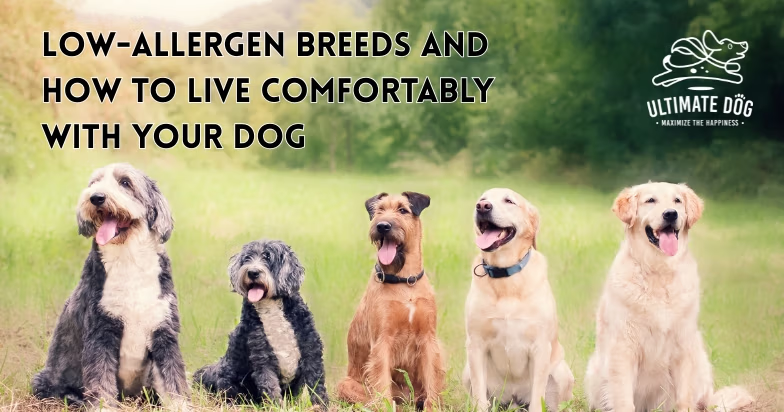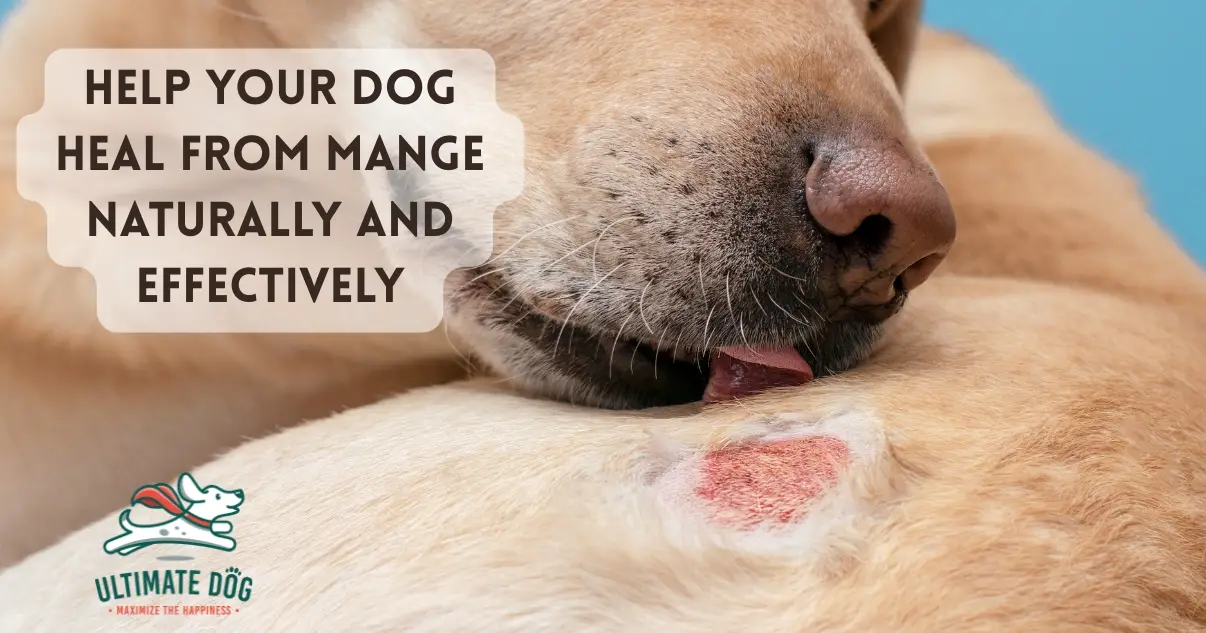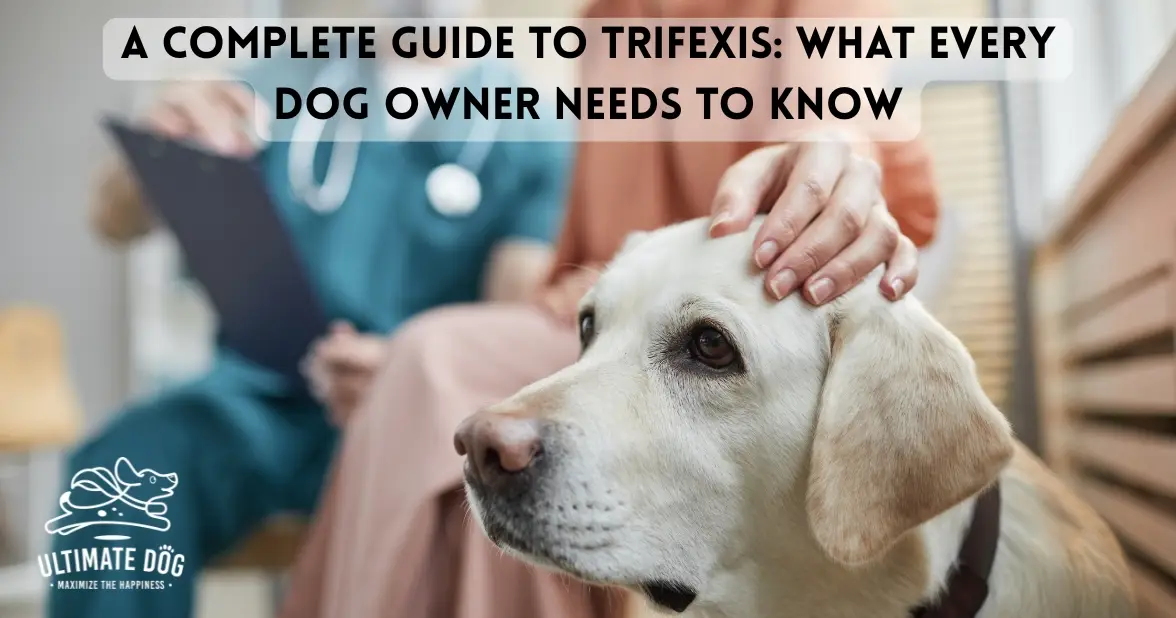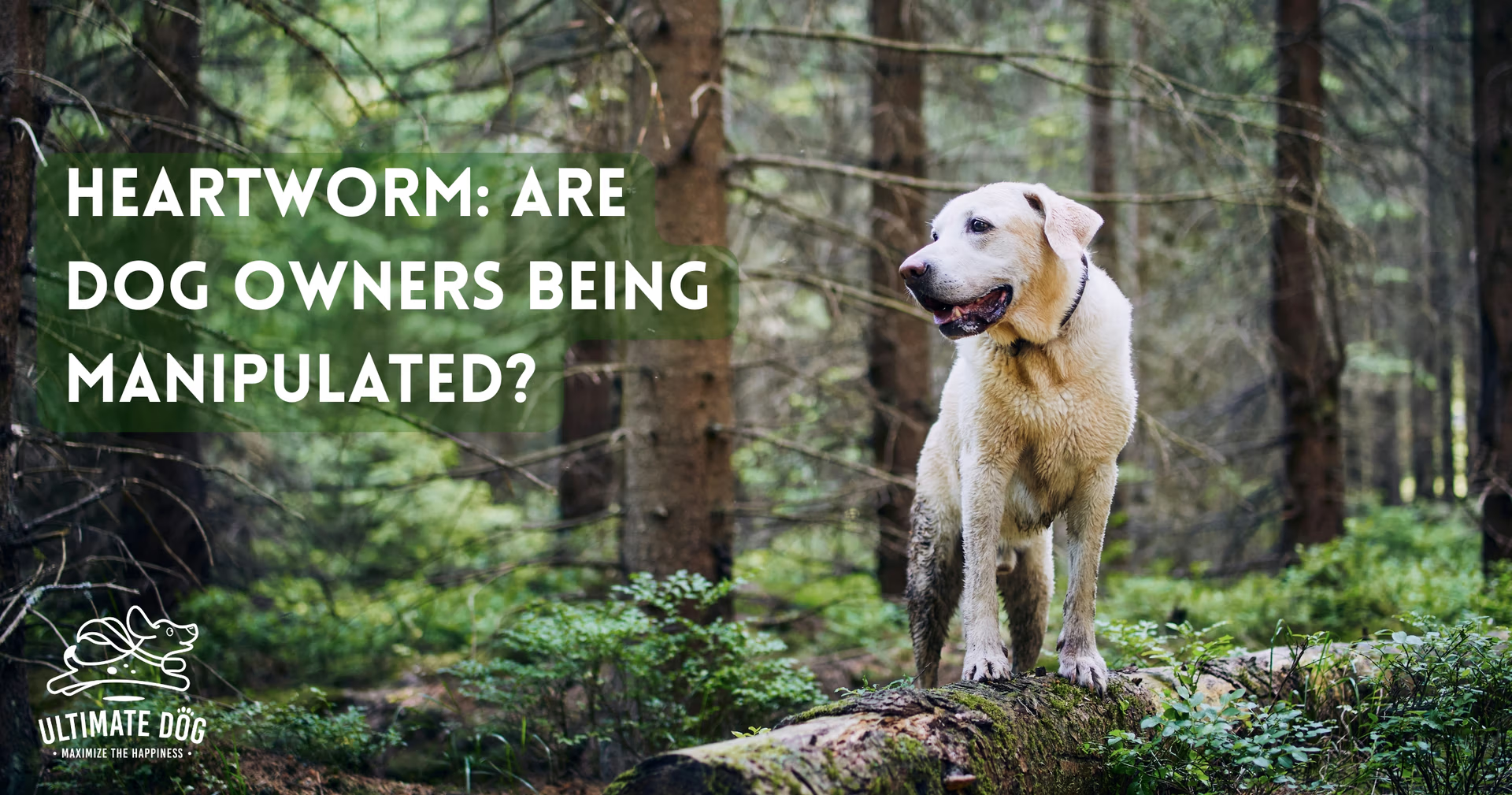TL;DR Summary:
- No dog is 100% hypoallergenic, but certain breeds produce less airborne dander
- Individual dogs vary significantly in allergen production, even within “hypoallergenic” breeds
- Success requires combining breed selection with environmental management and consistent grooming
- Small breeds like Bichon Frise and Maltese offer excellent apartment-friendly options
- Large breeds like Portuguese Water Dogs provide hypoallergenic qualities in bigger packages
- Professional grooming every 6-8 weeks is essential for maintaining allergen control
We know how heartbreaking it can be when allergies stand between you and the furry companion you’ve always dreamed of. If you’ve wondered whether hypoallergenic dogs could be your answer, you’re not alone—millions of families face this same challenge, seeking natural, effective solutions for lifelong health that allow the joy of dog ownership without constant sneezing and breathing difficulties.
Here’s the encouraging truth: while no dog breed is completely allergen-free, many breeds make dog ownership possible for allergy sufferers through reduced dander production and coats that trap allergens rather than releasing them into your home [1]. Your dog deserves the best, and we’re here to help you navigate this journey with science-backed insights that separate marketing myths from medical reality.
The Science Behind Hypoallergenic Dogs: What Research Really Shows
Let’s address the most important fact first: no dog is truly 100% hypoallergenic [1]. However, this doesn’t end your dreams of dog ownership. “Hypoallergenic” means “less allergenic”—referring to breeds with predictable, non-shedding coats that produce less dander clinging to pet hair, the primary trigger for most allergic reactions [1].
The main culprit behind your symptoms is a protein called Canis familiaris allergen 1 (Can f 1), found in dog saliva, dander, and hair. This persistent allergen appears in one-third of homes without dogs, showing how easily these proteins spread [2]. Research reveals that 50% of dog-allergic individuals have antibodies directed exclusively to Can f 1 [2]—meaning that for half of all people with dog allergies, this single protein triggers their symptoms.
Understanding this science empowers better decisions. Dogs that are hypoallergenic have coat characteristics that help minimize Can f 1 distribution throughout your living space. However, allergen production varies significantly between individual dogs, even within the same breed. This is why meeting a specific dog before adoption provides more accurate information than relying solely on breed generalizations.
If you’re considering welcoming hypoallergenic dogs into your home, remember to research the various traits and characteristics that make these breeds unique. Hypoallergenic dogs can provide companionship without the same level of allergic reactions that other breeds might cause.
Surprising Research Findings
Recent studies have challenged common assumptions about hypoallergenic breeds. A groundbreaking 2011 study found no significant difference in Can f 1 allergen levels between homes with “hypoallergenic” breeds compared to regular breeds [3]. Even more surprising, a 2012 study discovered Poodles—the gold standard for hypoallergenic breeds—actually had some of the highest Can f 1 levels measured, while Labrador Retrievers had significantly lower allergen levels [4].
These findings don’t negate hypoallergenic breeds’ benefits—they suggest advantages come from coat characteristics that trap and contain allergens rather than producing fewer allergens overall. Breeds with curly, dense coats that don’t shed prevent allergens from becoming airborne, even if they produce normal Can f 1 levels.
Understanding Dog Allergens: Beyond the Basics
Finding hypoallergenic dogs that match your lifestyle can significantly impact your quality of life, providing both companionship and comfort in managing allergies.
Between 10-20% of the U.S. population experiences allergies to cats and dogs [1][5]. For these millions of Americans, dog allergens can trigger symptoms from mild discomfort to severe respiratory distress. Research shows 96% of patients with clinical dog allergies react to both Can f 1 and Can f 2 allergens found in hair and dander extracts [2].
What makes dog allergens particularly challenging is their microscopic size and behavior. Can f 1 proteins remain airborne for extended periods and settle into fabrics, carpeting, and furniture? Unlike larger particles that settle quickly, these proteins circulate in your home’s air system for hours after a dog’s presence.
Small Hypoallergenic Dog Breeds: Cozy Companions
For families with limited space or those preferring smaller companions, several small hypoallergenic dog breeds combine manageable size with allergen-containing coat characteristics.
Top Small Breeds for Allergy Management
Bichon Frise stands out with its unique double coat that traps dander instead of releasing it into the surrounding air [6]. These cheerful dogs require professional grooming every 6-8 weeks, but their coat structure naturally contains allergens that would otherwise circulate throughout your home.
Maltese dogs offer excellent small-breed options with long, silky hair requiring daily brushing to prevent matting. This regular grooming removes loose dander before it spreads [7]. While maintenance is significant, many families find that this routine becomes a bonding experience.
Havanese bring friendly temperaments and practical hypoallergenic qualities. Their long, silky coats produce minimal shedding when properly maintained, and their social personalities make them excellent family companions [8].
Miniature Schnauzers feature distinctive double coats—wiry outer coats and soft undercoats. This combination requires specific grooming techniques, including hand-stripping or clipping every few months, but results justify the investment for allergy-prone families [6].
Poodles: Curly Coat Champions
Poodles remain popular hypoallergenic choices because their distinctive curly coats prevent dander from releasing into the air, trapping it within tight curls for removal through regular brushing and professional grooming [7]. This natural containment system appeals to families with moderate to severe dog allergies.
However, recent research provides important context—while Poodle coats excel at containing allergens, some produce higher Can f 1 levels than expected [4]. This doesn’t diminish their value as hypoallergenic companions; it reinforces that individual dogs vary significantly within breeds.
Poodle grooming requires professional attention every 6-8 weeks, plus daily brushing to prevent matting and remove trapped dander. Many owners find that this grooming investment reduces allergy symptoms while maintaining healthier, happier pets.
Large Hypoallergenic Dog Breeds: Big Hearts, Managed Allergens
Families seeking larger companions can find several large hypoallergenic dog breeds offering allergen-reducing benefits with the presence and personality of bigger dogs.
Athletic Water Dogs
Portuguese Water Dogs represent successful large hypoallergenic breeds, combining impressive size with excellent allergen management. Their dense, curly coats are naturally water-repellent and hypoallergenic, ideal for active families wanting larger dogs without allergy concerns [9][10]. These intelligent, athletic dogs require significant daily exercise but offer excellent companionship for active lifestyles.
Adopting hypoallergenic dogs means embracing routines that prioritize both their well-being and your family’s health needs, fostering a loving home.
Irish Water Spaniels share similar coat characteristics with Portuguese Water Dogs while bringing unique personality traits. Their distinctive curly coats provide allergen-trapping benefits, and their intelligence makes them excellent outdoor activity partners [9].
Standard Poodles deserve special mention as the largest Poodle family members, often reaching 75 pounds while maintaining hypoallergenic qualities that make smaller Poodles popular [11]. Their combination of size, intelligence, and minimal shedding appeals to families wanting substantial dogs without compromising allergy management.
Large Breed Lifestyle Considerations
Large hypoallergenic breeds require significant lifestyle commitments beyond grooming. These dogs typically need 60-90 minutes of daily active engagement for physical and mental health. Space considerations become important—larger dogs need adequate living areas for comfort, and grooming costs often double or triple those of smaller breeds.
Many families find that large hypoallergenic breeds excel with children, providing natural protection alongside allergy-friendly qualities. However, proper socialization and training become critical with larger dogs, requiring consistent professional training investment.
Poodle Mixes: Reality Check on “Doodles”
The “doodle” phenomenon—Labradoodles, Goldendoodles, and other Poodle crosses—requires genetic reality checks. First-generation crosses don’t guarantee hypoallergenic traits. Genetics doesn’t work like mixing paint—puppies can inherit any combination of traits from either parent.
Coat variation in Poodle crosses can be dramatic within the same litter. Some puppies develop tight, curly coats with hypoallergenic properties, while others have loose waves or straight hair that sheds significantly. This unpredictability makes guaranteeing hypoallergenic qualities impossible based solely on breeding.
When evaluating Poodle crosses, focus on individual puppy coat characteristics rather than breed promises. Look for tight curls, minimal shedding during handling, and consistent coat texture. Remember that coat characteristics change as puppies mature—maintain realistic expectations throughout development.
Creating Your Allergy-Friendly Home
Selecting a hypoallergenic dog breed is just the first step. Research shows homes with indoor dogs allowed in bedrooms had significantly higher Can f 1 levels than those with bedroom restrictions [12], highlighting the importance of strategic environmental management.
Essential Home Modifications
Understanding how to care for hypoallergenic dogs will ensure that everyone in your household remains comfortable and happy with their new furry friend.
Air Filtration Systems: HEPA filters capture microscopic allergen-carrying particles. Position air purifiers in main living areas and bedrooms, running continuously during peak seasons. Quality air filtration benefits extend beyond dog allergens, improving overall indoor air quality.
Cleaning Protocols: Vacuum frequently with HEPA filtration, focusing on upholstered furniture and areas where your dog spends time. Weekly washing of dog bedding, your bedding, and fabric items your dog contacts removes accumulated allergens before spreading.
Strategic Restrictions: Bedroom and furniture restrictions dramatically reduce allergen exposure during sleep. Dog-free zones, particularly bedrooms, create safe retreats when symptoms overwhelm. Combined with bedroom air filtration and frequent bedding changes, these spaces become allergen-free sanctuaries.
Flooring Choices: Hard surfaces like tile, hardwood, or laminate allow more effective allergen removal than carpeting. If carpeting is necessary, choose low-pile, natural fiber options and invest in professional cleaning every six months.
Natural Allergen Reduction Solutions
Regular grooming schedules benefit both your dog’s health and family comfort. Weekly baths with gentle, natural shampoos remove accumulated allergens while maintaining skin health. However, over-bathing can dry skin and increase dander production—finding the right balance is essential.
Proper nutrition with omega fatty acids supports healthy skin and coat condition, potentially reducing dander production [13]. High-quality diets rich in omega-3 and omega-6 fatty acids promote skin health, while adequate hydration maintains proper moisture levels that minimize excessive shedding [13].
Chemical-free cleaning alternatives protect your family’s health and your dog’s respiratory system. Natural enzyme cleaners effectively break down protein-based allergens without harsh chemicals that might trigger additional sensitivities.
Professional Grooming: Your Allergen Management Partner
Professional grooming represents more than cosmetic maintenance—it’s crucial for your family’s allergen management strategy. Understanding professional versus home grooming helps develop comprehensive approaches to maximizing your dog’s hypoallergenic potential.
Professional Care Benefits
Professional grooming every 6-8 weeks provides deep cleaning and maintenance that is difficult to achieve at home. Professional groomers have specialized tools for thoroughly removing trapped dander, properly trimming coats to maintain hypoallergenic properties, and identifying skin conditions that might increase allergen production.
Frequency recommendations vary based on coat type and individual sensitivity levels. Dogs with continuously growing coats, like Poodles and Bichon Frises, require more frequent professional attention. However, allergy-prone families often benefit from more frequent grooming than typically recommended for cosmetic purposes alone.
Home Grooming Essentials
Daily brushing removes loose hair and trapped dander before spreading throughout your home—one of the most effective allergen management strategies available. Brushing tools depend on coat type: pin brushes for longer coats, slicker brushes for curly textures.
Bathing techniques that remove allergens without over-drying skin require careful product selection. Lukewarm water prevents irritation while effectively loosening trapped dander. Thorough rinsing removes both cleaning products and loosened allergens.
Natural Product Considerations: Eco-friendly shampoos with natural moisturizers like oatmeal, aloe vera, or coconut oil cleanse effectively while maintaining skin barrier function, preventing excessive dander production. Always consult your veterinarian before introducing new products.
Managing Environmental Allergies in Dogs
An often-overlooked aspect involves managing your pet’s own environmental allergies, which affect both their comfort and your allergen management efforts. Environmental allergies in dogs have increased significantly over the past decade, with growing evidence pointing to early-life overmedication—including frequent antibiotics, dewormers, and excessive vaccination—as a contributing factor. These interventions can disrupt the gut microbiome, impair immune system development, and increase the likelihood of hypersensitivity reactions later in life [14][15].
Dogs suffering from environmental allergies experience increased scratching and skin irritation that can increase their dander production. Additionally, allergic dogs may require more frequent bathing and grooming to manage symptoms. Research shows that disturbances to the gut microbiome can reduce immune tolerance, making dogs more reactive to common environmental triggers such as pollen, dust, or mold [14] [15].
Holistic Management Approaches
Holistic treatments work by strengthening immune systems and addressing underlying causes rather than treating surface symptoms [16]. This approach benefits entire households by reducing overall allergen loads and creating healthier environments for both pets and people.
Natural supplements that may benefit both pet and owner include omega fatty acids for skin health, probiotics for immune support, and quercetin for natural antihistamine properties. Always consult your veterinarian before introducing supplements, as individual dogs may have specific health considerations.
Environmental modifications reducing allergen loads for everyone include regular HEPA filtration, maintaining 30-50% indoor humidity, and creating buffer zones near entrances where outdoor allergens can be removed before spreading throughout your home.
Daily Life with Hypoallergenic Dogs
Successfully integrating a hypoallergenic dog requires sustainable routines supporting both your family’s health and your pet’s well-being.
Even well-cared-for hypoallergenic dogs can occasionally require additional management, especially during seasonal changes when allergens are more prevalent.
Effective Daily Routines
Integrating hypoallergenic dogs into your daily life can create a more fulfilling environment while minimizing allergic reactions with proper care and attention.
Morning Protocols: Check air purifier filters, wipe surfaces where your dog sleeps, and quick grooming to remove overnight dander accumulation.
Evening Protocols: Remove outdoor allergens, check for skin irritation signs, and prepare sleeping areas for optimal allergen control.
Seasonal Adjustments: Spring protocols emphasize frequent bathing and indoor air filtration; fall routines focus on preparing for increased indoor time and heating system allergen circulation.
Travel Considerations: Research pet-friendly accommodations with hard floors, pack portable air purifiers, and maintain grooming schedules while traveling.
Financial Planning
Creating a harmonious living space with hypoallergenic dogs requires an understanding of their needs and a commitment to maintaining a clean environment.
Grooming Investment: Professional grooming costs vary significantly—small hypoallergenic breeds typically cost $50-$100 every 6-8 weeks, while large breeds may cost $100-$200 per session. Annual expenses often total $400-$1,200, depending on size and coat complexity.
Home Modifications: HEPA air purification systems, flooring updates, and specialized cleaning equipment require substantial initial investment but provide long-term benefits beyond pet allergen management.
Veterinary Care: Hypoallergenic breeds may need additional dermatological monitoring, allergy testing, and specialized nutritional counseling to support optimal coat health.
Setting Realistic Expectations for Success
We understand because we’ve been there—the careful research, cautious optimism, and deep desire to welcome a furry family member without compromising health. Individual variation within breeds remains the most important factor determining whether a specific dog works for your family’s needs.
Pre-Adoption Guidelines
Meeting Potential Dogs: Visit in controlled environments where you can observe family reactions over extended periods. Spend several hours across multiple visits to assess immediate and delayed allergic responses. Pay attention to coat texture, grooming needs, and individual temperament—stress can increase allergen production.
Timeline Expectations: Most families notice improvements within 2-4 weeks of consistent allergen management routines. However, some may require several months to adapt, and sensitivity levels might change seasonally or during stress.
Building Support Networks: Establish relationships with groomers and veterinarians early. Communicate openly about allergy concerns and work together to develop maintenance schedules supporting both your dog’s health and family comfort.
Your Path Forward
Your dog deserves the best, and we’re here to help you create natural, effective solutions for lifelong health that allow your family to experience the unconditional love dogs bring to our lives. While living successfully with hypoallergenic dogs requires commitment and realistic expectations, millions of families have discovered that rewards far outweigh challenges.
Remember that success often comes not from finding the perfect allergen-free pet, but from creating comprehensive management strategies combining thoughtful breed selection with environmental modifications, consistent grooming routines, and holistic health approaches. With patience, dedication, and the evidence-based strategies in this guide, your dream of sharing your home with a four-legged family member can become a joyful reality.
Sources:
[1] Best Dog Breeds for People With Allergies. American Kennel Club. 2024-03-26. https://www.akc.org/expert-advice/dog-breeds/hypoallergenic-dog-breeds/
[2] e101 Can f 1. Thermo Fisher Scientific. 2025-01-01. https://www.thermofisher.com/phadia/us/en/resources/allergen-encyclopedia/e5/e101.html
[3] Nicholas CE, et al. Dog allergen levels in homes with hypoallergenic compared to non-hypoallergenic dogs. PMC. 2011. https://pmc.ncbi.nlm.nih.gov/articles/PMC3680143/
[4] Does a Completely Hypoallergenic Dog Exist? American Kennel Club. 2023-12-07. https://www.akc.org/expert-advice/dog-breeds/do-hypoallergenic-dog-exist/
[5] Hypoallergenic Dogs – Page 2 of 3. American Kennel Club. 2025-01-01. https://www.akc.org/dog-breeds/hypoallergenic-dogs/page/2/
[6] Small Hypoallergenic Dog Breeds: Finding Your Perfect Companion. Wag Hotels. 2025-01-10. https://www.waghotels.com/blog/small-hypoallergenic-dog-breeds-finding-your-perfect-companion/
[7] Best Hypoallergenic Dogs Breeds: Dogs Who Don’t Shed A Lot. Kinship. 2024-09-04. https://www.kinship.com/dog-lifestyle/the-best-hypoallergenic-dog-breeds
[8] The Ultimate Guide to Hypoallergenic Dogs. Only Natural Pet. 2021-12-06. https://www.onlynaturalpet.com/blogs/holistic-healthcare-library/the-ultimate-guide-to-hypoallergenic-dogs
[9] Which Dog Breeds Are Hypoallergenic? Lovet. 2023-03-22. https://www.lovet.com/blog/hypoallergenic-dogs/
[10] 30 ‘Hypoallergenic’ Dogs That Don’t Shed a Lot. PetMD. 2023-11-10. https://www.petmd.com/dog/general-health/hypoallergenic-dogs
[11] Large Hypoallergenic Dogs- The Best Big Pups for Your Health. Pet My Ride. https://petmyride.com/blogs/blog/large-hypoallergenic-dogs
[12] Nicholas C, et al. Dog characteristics and dog allergen levels in the home. PMC. 2004-04-01. https://pmc.ncbi.nlm.nih.gov/articles/PMC2954595/
[13] Ultimate Guide to Dog Breeds That Don’t Shed. Colorfil. 2024-10-24. https://www.colorfil.com/blogs/articles/ultimate-guide-to-dog-breeds-that-dont-shed
[14] The Gut Microbiota and Pet Health: The Canine and Feline Microbiome in Health and Disease. Animal Frontiers. 2024-06-27. https://academic.oup.com/af/article/14/3/46/7696634
[15] The Canine and Feline Gut Microbiota: A Review. Frontiers in Veterinary Science. 2019-11-15. https://www.frontiersin.org/journals/veterinary-science/articles/10.3389/fvets.2019.00498/full
[16] Holistic Treatments for Dogs with Allergies: Types and When To Use. PetMD. 2025-07-23. https://www.petmd.com/dog/general-health/holistic-treatments-for-dogs-with-allergies

AI-researched and drafted article. Reviewed, edited, and certified by Daiva Rizvi, NC, BCHN, CCH.
Daiva Rizvi is a Board-Certified Holistic Nutritionist and a Board-Certified Classical Homeopath (for humans). As Chief Formulator for Ultimate Dog and creator of the CHIRP allergy supplement for dogs, she brings her passion for natural healing to pet wellness. Learn more about Daiva here https://oldcountrywellness.com















